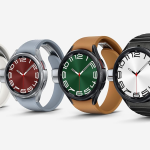Getting children a virtual reality device for Christmas might seem like a good idea, but Australia’s online safety boss has warned parents must do their research on risk first.
While VR may be the future, and their immersive experiences sometimes educational, the eSafety Commissioner is cautioning that VR comes with risks.
The eSafety Commissioner Julie Inman Grant said immersive devices like VR headsets and haptic gloves can unlock new experiences for children, but they can also expose them to harm, including cyber bullying.
The eSafety Commissioner’s gift guide also warns parents that simulated violence or assaults in VR could have “real and physical mental impacts”.
Ms Inman Grant said research from her office showed one-in-five young people who have engaged in immersive or “metaverse” environments have experienced something that made them feel unsafe.
“Immersive tech, such as VR headsets and haptic technology, drastically increases the realness of an online experience, making the impact of cyber bullying or abuse far more visceral,” she said.
“On top of that, many of these worlds can enable your child to interact with total strangers in private spaces.
“We want parents and carers to maximise these immersive experiences with their kids while ensuring they’re not unintentionally inviting virtual predators into their homes or opening up worlds that promote harmful ideas or gory content.”
Virtual reality can be fun and educational but there are risks to consider.
Age needs to be considered
Parents need to question what age group a device or content has been designed for, with many VR headsets recommending they should not be used by people under 13.
“Users should also review the classification of apps and immersive environments accessed using the headset to make sure it’s age appropriate,” the eSafety Commissioner’s gift guide states.
Safety manuals also warn that people who use headsets for long periods of time could see their vision or co-ordination affected.
Stimulating technology can make it hard for children and adults to disconnect from the virtual world and step into the real world.
Parents must understand virtual reality controls
Ms Inman Grant said parents need to understand which parental controls are built in.
“For example, can you approve any app downloads or purchases? Can you view their friends? Can you control or restrict access to known and age-appropriate players?”
She also stressed the importance of being aware of a device’s privacy features as some wearables can potentially collect “extensive” biometric information.
In terms of cyber bullying or harmful content, Ms Inman Grant said parents need to make sure their child can report such content quickly or “contact, and mute or block other users in real-time”.
Ms Inman Grant recommends parents choose age and developmentally-appropriate immersive landscapes.
Parents need to be active participants
It’s essential parents are active participants in their child’s online and virtual activities, Ms Inman Grant said.
Parents should be regularly checking the settings and landscapes a child is playing in.
“Have them use their devices in open areas of the home and supervise what they’re doing,” she said.
“New features now make it possible to monitor activity by ‘casting’ or ‘mirroring’ what is on your child’s headset onto the family TV.
“The online and offline worlds of children and young people are inextricably linked, often in ways that adults don’t understand, so it’s crucial parents and carers are engaged in both these worlds.”
Risks associated with other tech gifts
The eSafety Commission gift guide listed other items parents might consider gifting their children, each with their own warnings.
Tablets are great for keeping kids entertained, and they can also be educational, but they pose similar risks to VR including cyber bullying and inappropriate content.
Perhaps another risk parents might not consider is that sometimes a wireless connection or information storage might not be secure.
If this is the case, other people may be able to access data and recordings on the device, without consent. This could also mean strangers might be able to contact the child.
The issues to consider for a tablet also apply to a smart phone.
And wearable devices like fitness trackers or smart watches track data and can be one way to know where a child has been. Such devices often store personal and GPS data.
For this reason, the eSafety Commissioner suggests keeping track of such devices and their associated accounts and making sure they are secure with strong passwords and passcodes.
For more tips about buying gifts safely see this comprehensive guide by the eSafety Commissioner.
The post Gifts of virtual reality headsets and other tech for children come with risks, parents warned appeared first on The New Daily.







